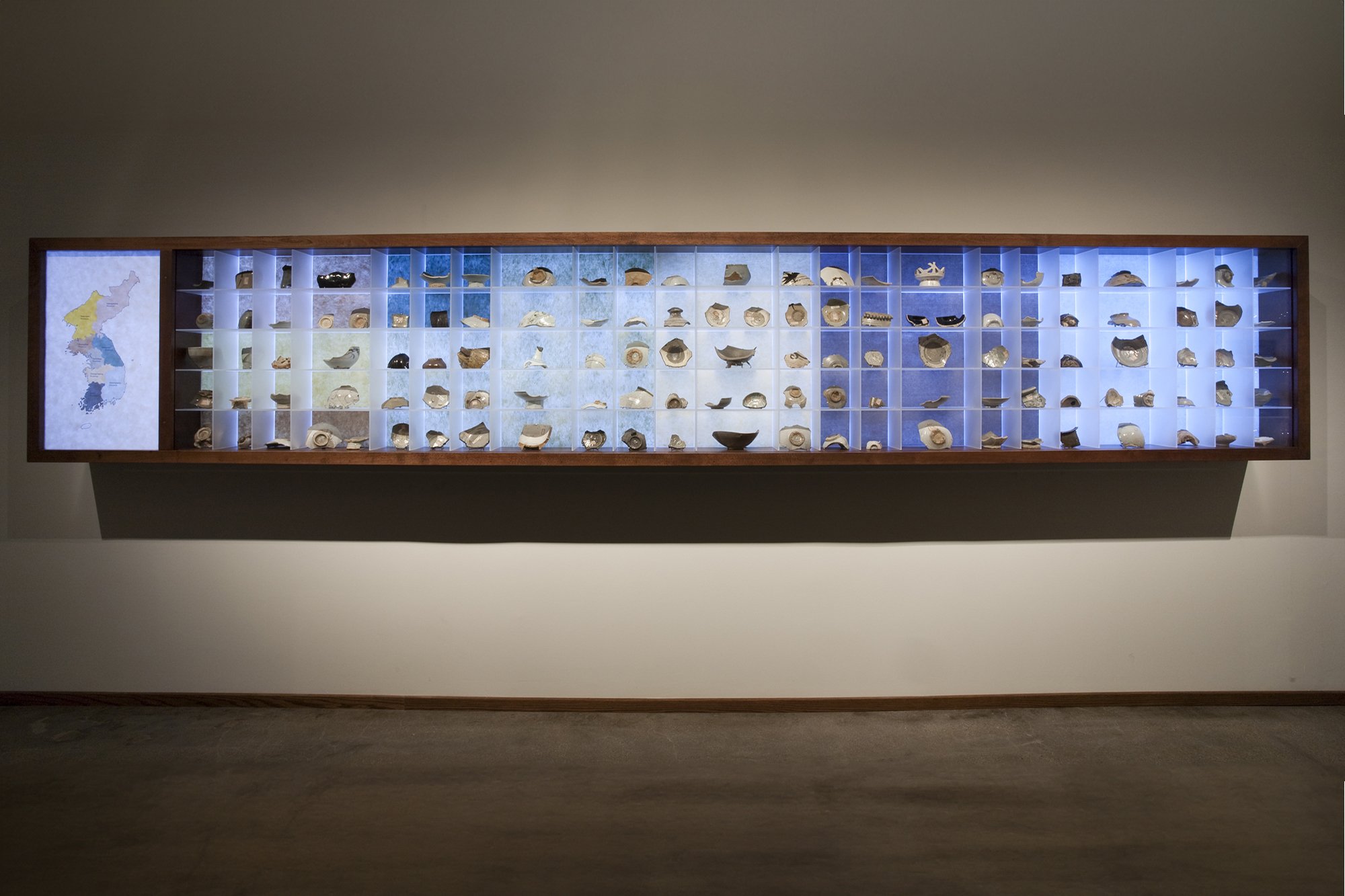Korean Permanent Collection
LACMA’s Korean Art Galleries, now closed for construction of a new building, were the largest of any museum in the United States. They included spectacular examples of Korean paintings, ceramics, textiles, and Buddhist art. The ceramics span nearly 2,000 years of Korean history, from the Three Kingdoms Period (57 BCE–CE 668) to the present, while the paintings focus on works from the Joseon dynasty (1392–1910). Among the ceramics are excellent examples of Goryeo dynasty (918–1392) celadon wares, such as a Flower-shaped Cup Stand with Inlaid Flower Spray Design, dating to the 12th century. The galleries also included one of LACMA’s finest Korean folding screens, depicting a banquet hosted by the ancient Daoist goddess Seowangmo (Xiwangmu), Queen Mother of the West, a personification of the cosmic yin (feminine) force in the yin-yang duality.
Though not the lead designer on this reinstallation, I created technical documents for the build at as well as serving as the on-site designer for placement of objects during installation. Of note is the presence of climate-control in many of the cases, required to maintain the safety of the artwork displayed. The Korean Shard Case, pictured here, was a collaboration between graphic designer Michael Storc and me, allowing curators to exhibit portions of their large collection of ceramic shards in a format that enabled visitors to easily access their region of origin and cultural importance.









